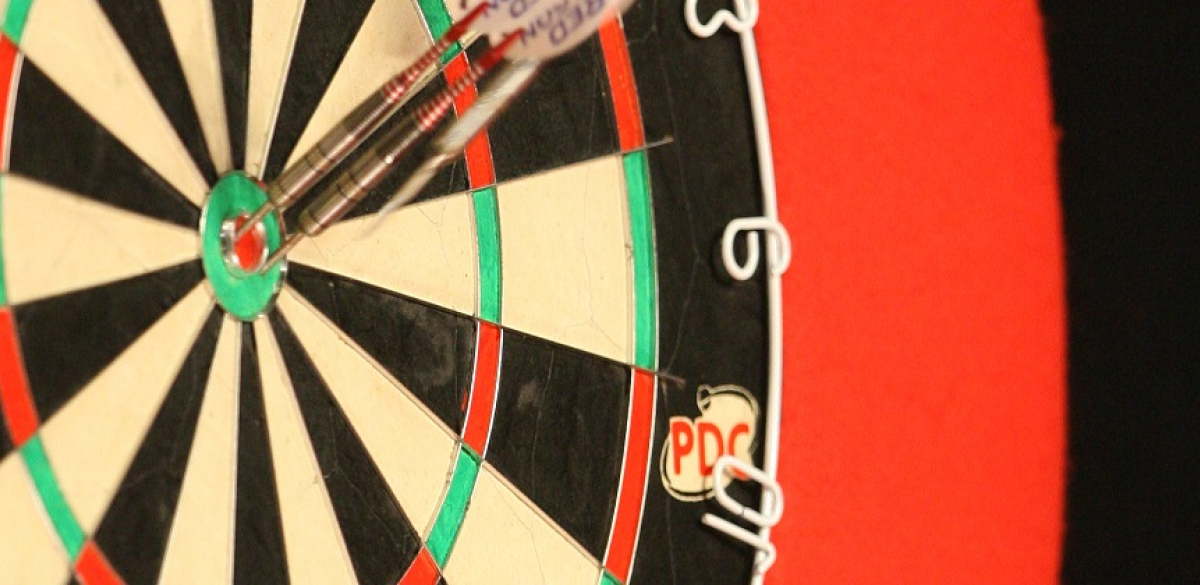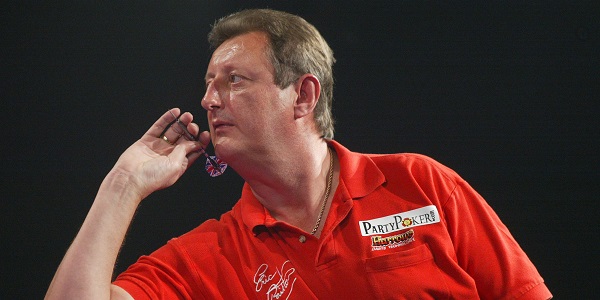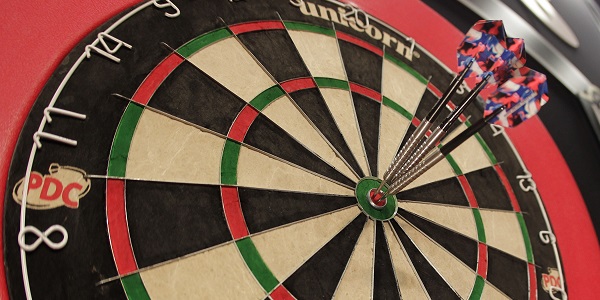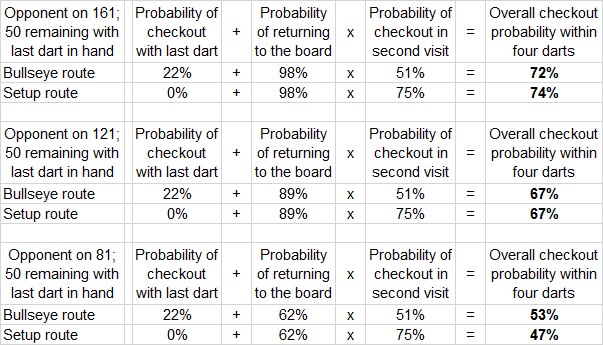
Christopher Kempf, the statistical analyst of the PDC, looks at whether a player should play it safe or go for glory with the bullseye.
ONE of the most important strategic decisions a player can make in darts is whether or not to attempt a bullseye finish with the last dart, with an opponent threatening to check out if he returns to the board.
When Michael van Gerwen did this in the 2013 Premier League final, eschewing the bullseye to set up double 16 with 16-time World Champion Phil Taylor waiting on 160, the miscalculation smacked of youthful arrogance and bewildered commentators Wayne Mardle and John Gwynne.
How could the Dutchman think that the greatest player in the history of darts would have such a small probability of finishing a straightforward 160?
And anyway, shouldn't you always go for the bullseye with the leg, or the match, or the tournament, on the line?

Eric Bristow's decision not to at the 1983 World Darts Championship remains a mythical moment in the history of darts, and the widely cited test case of this scenario.
Keith Deller cast doubt on the wisdom of setting up the double - as Sid Waddell termed it, "the percentage shot" - by completing a 138 finish and snatching the World Championship title from under the nose of the best player in the game.
Statistician Burton DeWitt's exploration of this question ("The Deller: A Statistical look at whether Bristow should have gone for the bull") suggested, based on 2016 European Tour data and players' estimations of their own tendencies when throwing for the bull, that "at worst...Bristow made a very small statistical error by going for 18. At best, he made a choice between two relatively even plays."
As valiant as DeWitt's effort was to unravel the strategic implications of the Deller-Bristow clash, to some extent the possibility of a comprehensive understanding of the precise statistical factors at work on the night of January 8 1983 have been lost to history.
There is not enough extant data on the probability of Bristow or of Deller hitting various targets around the board from those early years of professional darts to analyse this question definitively.
What we can do, however, is determine the range of finishes for which a present-day player should and should not throw for the bull in order to win the most legs in the long run.
Given a large dataset of players' tendencies when attempting various checkouts, or of the distribution of their darts around the bullseye (which, thanks to Sportradar and DartConnect, can now be assembled), the statistical breaking point between the bull route and the setup shot can be calculated for any player, or for the PDC writ large.
The modern PDC professional player, over the span of some 25,000 legs of darts played in the past 15 months, is 11% more likely to win the leg when he has three darts at a double (76%) than when he has two (65%).
As a player switches or blocks the bed, each additional double he attempts in the visit gives him a smaller improvement in checkout probability than did the previous dart.
Thus, the third double actually yields quite an unimpressive improvement when considered in the Deller scenario.
A player puts himself at risk to an opponent's checkout by eschewing the bullseye, only to gain a quite small finishing advantage.
Yet when an opponent's likelihood of finishing is near-zero, it may make all the difference.

The last 2,000 attempts at the bullseye to win a leg in stage events have yielded a checkout rate of approximately 22%.
When a player attempts the bull, moreover, he will leave himself a score of 25 a majority of the time for the next visit.
That guaranteed 22% means that the probability of a checkout in four darts declines more slowly after a bull attempt as the opponent attempts easier finishes.
Setting up the double while an opponent attempts a 141 finish may all but guarantee a return to the board to attempt a 76% shot, but an opponent attempting a 41 checkout will more likely than not punish that poor strategic decision.
The big-number setup, however, is no sure thing, even for the professionals. On average, PDC players miss one out of every 20 singles - the biggest targets on the board.
In effect, this means that the 76% checkout with three darts at double 16 or 20 is actually a 75% shot over the span of four darts.
A small difference, to be sure, but significant enough to result in one failed checkout for every 182 attempts.
Thus if we know a player's checkout probability over four darts in both scenarios, all that remains to complete the analysis is to estimate his opponent's checkout probability across the range of three-dart finishes, from two to 170.
With the opponent not on a finish, the setup shot (75.5%) trumps the bullseye route (72.7%) in terms of checkout probability within four darts.
And of course, where an opponent has three darts at a double, the setup route (18.1%) has nothing to offer; attempting the bullseye (34.2%) is absolutely essential.
The dividing line between a good strategic decision and a poor one is somewhere in the middle.
And in fact, when the average PDC opponent attempts a finish for which he has a 11% probability of a three-dart checkout, the setup and bullseye routes yield the same probability of success in the long run.
For checkouts of 121 to 130, which have three-dart checkout rates between seven and 13%, the bullseye has a miniscule advantage for some finishes (127, 130) and the setup route for others (125, 129), though both routes are similarly effective.
This puts a surprisingly large set of finishes within the range of a successful "percentage shot".
Accordingly, whenever a player attempts to check out from a score greater than 130, the very high probability of returning to the board makes setting up three darts at a double a better long-run prospect for the average professional.
The advantage is small - one additional checkout for every 50-100 attempts is an unimpressive return for having gambled away the right to attempt a bullseye checkout and win the leg outright - but it is real, and over the course of a year or two it will result in winning more legs.
Checkout Probability Stats

But the players for whom this strategic decision is most hotly debated are in no way average.
No player would dare bet against Michael van Gerwen hitting a 160 finish, or Raymond van Barneveld hitting a 156.
Against the very best players in the world, it may only be advisable to set up the double when forcing an opponent to attempt the most difficult finishes in darts (161-170) and perhaps some of the more obscure high finishes (for example 139, 149, 151).
Estimating the likelihood of an opponent checking out from different scores is a challenging prospect, and it is always prudent to err on the side of caution (attempting the bullseye) when doing so.
With the match or the tournament on the line, no statistician can get inside the head of a player performing under great stress and pressure.
But when Michael van Gerwen was taught the "biggest lesson of his life" by Phil Taylor, it was also a lesson in probability.